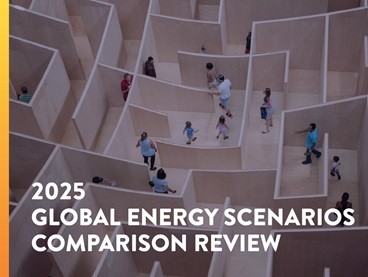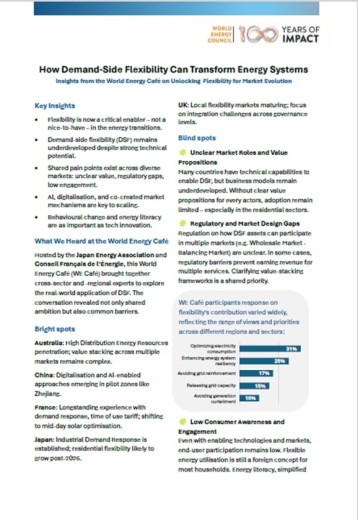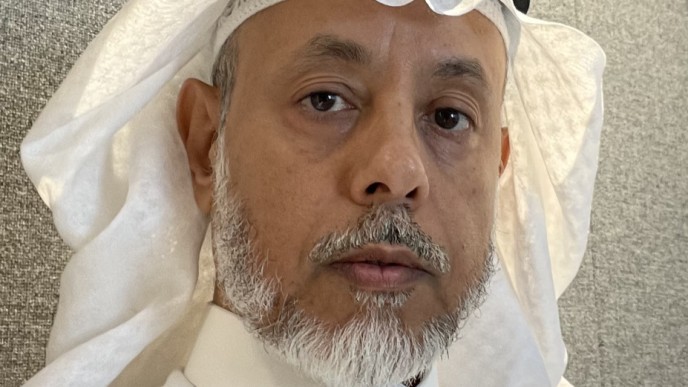Energy transition: The ‘ultimate connected management challenge’
This article was originally published by Pamela Largue in Power Engineering International.
Dr Angela Wilkinson
“There’s a difference between good leadership and great leadership and what we’re recognising with energy transition is that what’s got us to here isn’t going to get us to there…”
Dr Angela Wilkinson, secretary general and chief executive of the World Energy Council, knows about great leadership.
As a woman who has worked on both sides of the public/private fence, Wilkinson has seen what it takes to bring about the kind of transformational change needed for our global energy transition.
It’s certainly more than merely being able to communicate, inspire and make good decisions, she says.
She refers to the global energy transition as the “ultimate connected management challenge” and stresses that we simply can’t overlook people part of this journey.
“We are actually having to turn the future around… we aren’t just aiming for a straight line of better, we need to change direction,” says Wilkinson, and to achieve this at speed she says we need to bring more diversity to the table and make sure people are at the centre of it all.
Who is leading the pack?
Rather than picking a specific example of great leadership, Wilkinson suggests that we are all leaders with a degree of agency that matters, whether small or big.
She cautions against the celebrity culture of leadership, suggesting a more humble stance of who the leaders are in energy transition.
“We can celebrate the leaders we admire, but we also have to recognise that there are leaders who are emerging who will never be recognised for the work that they are doing.”
And many leaders are still emerging, she says, adding “the role of the current generation is to get out of the way, create the space and champion change.”
Leading across public, private and civic domains
Wilkinson recounts how her service in both public and private sectors helped shape her leadership style.
“I am somewhere on the cusp on this,” she says, adding that it’s critical to be able to adapt to the various contexts, with different measures of success, different accountability mechanisms and different ways of perceiving competition.
“It’s not good enough to be good-spirited, you need to make a difference.”
It’s about learning to blend various leadership styles to maximise the impact across the public, private and the civic domain.
“We are also leaders of the community, not just in terms of public interest or commercial realities.”
She recommends being willing to look over the fence and empathising with the other side, as well as engaging with and celebrating diversity.
Smashing glass ceilings for youth and women
At the core of Wilkinson’s perspectives on leadership is diversity, without which we won’t be able to meet the challenges of energy transition.
“Paris is a milestone, not the destination,” she explains, adding managing the energy trilemma of security, affordability and sustainability will require a celebration of diversity.
To meet the challenges presented by this trilema, she called for the nuturing of connections that will allow the leaders needed to emerge, especially the next generation and women.
“We need to have the future at the table and on the menu,” she says, stating that by bringing the next generation into the conversation, they can help define the vision and how to implement it.
And it’s not only the next generation that needs to be seated at this table. According to Wilkinson, while intergenerational dialogue is critical, ensuring gender diversity is equally important.
“My role is not to champion women as CEOs alone: I want a much more whole-woman agenda in energy.”
She emphasises that women play an important role in the whole energy system, especially as users of energy. If we intend to stop wasting energy, we need to effectively engage the demand side conversation – women need to be a part of this conversation, she says.
The conversation around how to ensure wider and wiser uses of energy is often too focused on the production side, she explains. It’s focused on the technical and economic assessments and it uses a language that is unintelligible to those who need to be engaged to push energy transition.
It comes down to people
To ensure a faster and fairer energy transition, she says, “we need a story that engages them, a vocabulary that everybody can use… and we have to reconnect the dots between the production side and the user side”.
When it comes to the energy transition, says Wilkinson, “we often talk in jargon which is often 50,000 feet at the top of a summit and actually we grow the future in the rich and diverse soils of the valleys”.
People must be at the centre of the energy transition, people who are 360 degree beings with a contribution to be celebrated, stresses Wilkinson. She called for active listening and engagement with people, to help them understand their roles and the importance of their choices in affecting change.
Wilkinson refers to the kind of leadership that is needed as a “communal cookery kitchen,” where all stakeholders are invited to rebake the cake.
And rebaking this cake will take thousands of small steps, however, says Wilkinson, each step must be celebrated.
Listen to the full conversation with Dr Wilkinson in this episode of the Energy Transitions podcast








